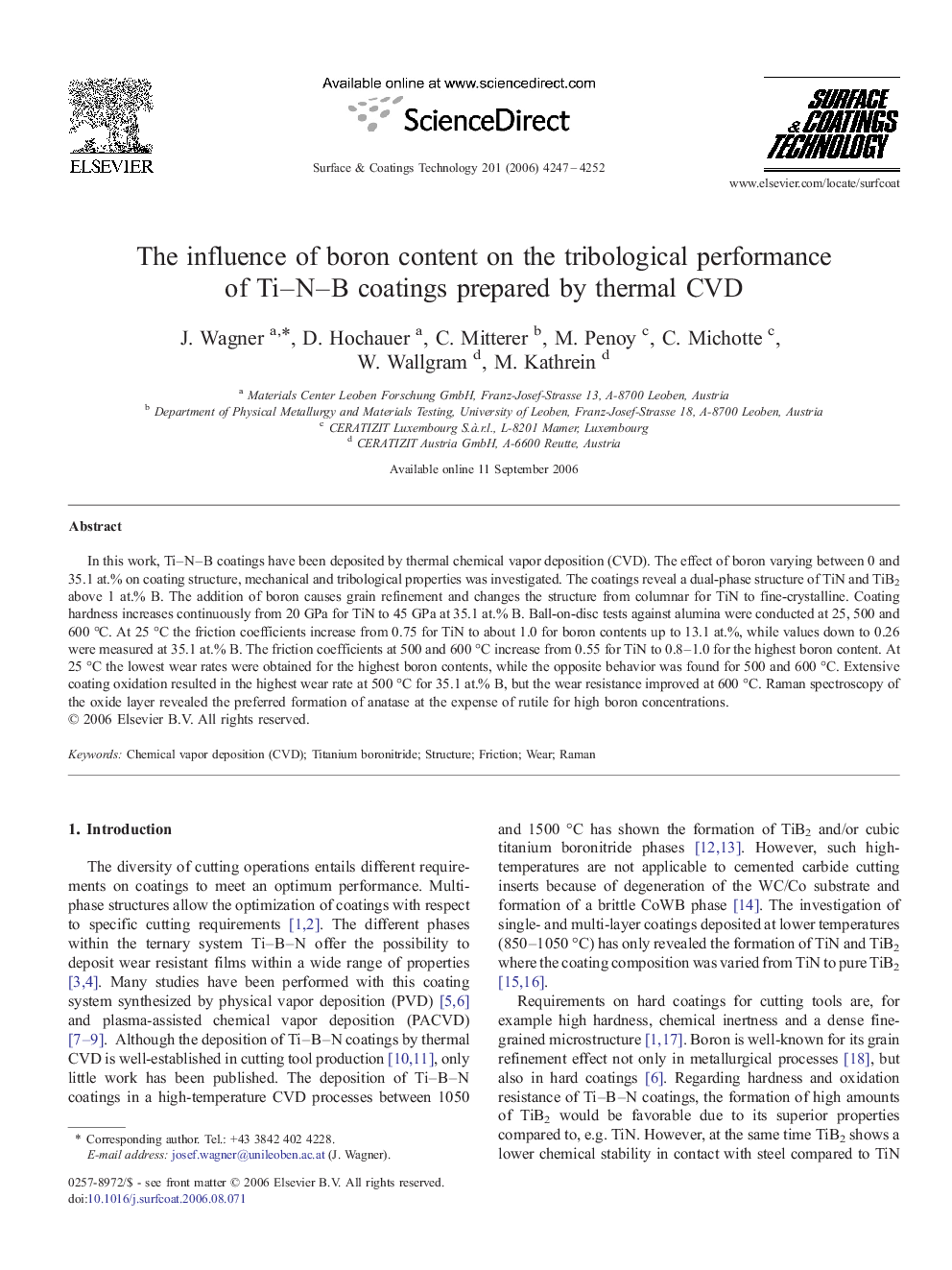| Article ID | Journal | Published Year | Pages | File Type |
|---|---|---|---|---|
| 1663244 | Surface and Coatings Technology | 2006 | 6 Pages |
In this work, Ti–N–B coatings have been deposited by thermal chemical vapor deposition (CVD). The effect of boron varying between 0 and 35.1 at.% on coating structure, mechanical and tribological properties was investigated. The coatings reveal a dual-phase structure of TiN and TiB2 above 1 at.% B. The addition of boron causes grain refinement and changes the structure from columnar for TiN to fine-crystalline. Coating hardness increases continuously from 20 GPa for TiN to 45 GPa at 35.1 at.% B. Ball-on-disc tests against alumina were conducted at 25, 500 and 600 °C. At 25 °C the friction coefficients increase from 0.75 for TiN to about 1.0 for boron contents up to 13.1 at.%, while values down to 0.26 were measured at 35.1 at.% B. The friction coefficients at 500 and 600 °C increase from 0.55 for TiN to 0.8–1.0 for the highest boron content. At 25 °C the lowest wear rates were obtained for the highest boron contents, while the opposite behavior was found for 500 and 600 °C. Extensive coating oxidation resulted in the highest wear rate at 500 °C for 35.1 at.% B, but the wear resistance improved at 600 °C. Raman spectroscopy of the oxide layer revealed the preferred formation of anatase at the expense of rutile for high boron concentrations.
